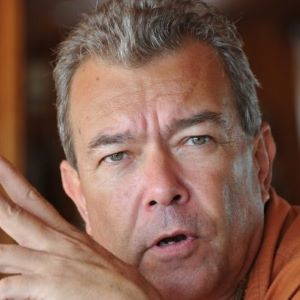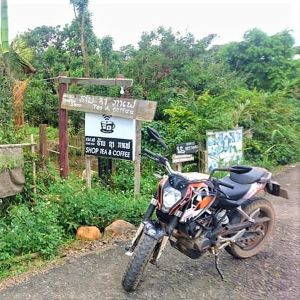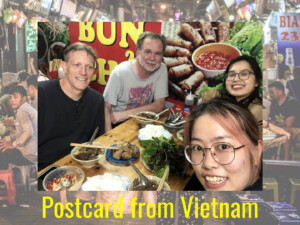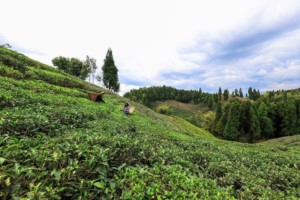Living Laos by riding it

Having lived in Laos for all but a year since 2009, I realise how little the general visitor to the PDR takes home with them in terms of experiences and memories.
Perhaps that is because ever since I started living in Laos I have wanted to explore my new home on a motorcycle. And now that I have done so I know what I missed. It is why I would encourage adventurous visitors to consider exploring Laos on two wheels.
After six years of thinking about it and doing research, in 2015 I made the decision to buy a three-year-old bike in Bangkok, Thailand and import it into Laos. My 200-cc KTM Duke, including import duties and all the official paperwork, cost the same as if I had bought a 25+ year old Honda in Laos.

The inside track
Dutch national Chris Mulder is the GM of Kingfisher Ecolodge in the Pathoumphone district of Champasak Province in southern Laos. He also founded the KTM Laos motorcycle club.
“GT” Destination Partner We Are Lao invited Chris to share this “GT” Travel Experience.
And so my journey of owning and enjoying a motorcycle in Laos began. I have documented much of it on the KTM Laos Facebook page. I wish I had started sooner than 2015 because my life in Laos has been so much richer since.
I realise that travel of this style will not be for everyone, but those who try this way of discovering Laos will take home with them memories that will last a lifetime.
In the West there is lots of talk about supporting local communities, buying and eating local, and sleeping at locally-owned places. Alas, in reality, this is seldom followed.
However, this is another good reason why I am supportive of motorcycle tourism in Laos: In my experience, bikers spend money wherever they go, contributing directly to local communities, villagers, and mom and pop businesses.
Indeed to boost to communities throughout the country as tourism recovers from COVID, I hope that the Lao PDR government will make it easier for the large number of Thai, Vietnamese, and Cambodian bikers and biker groups to ride into Laos.

On your explorations of Laos for the first time, you will of course want to see the headline attractions: The karsts of Vang Vieng, the old capital of Luang Prabang, and perhaps even the modern capital of Vientiane. But these represent, in my opinion and experience, not even 10% of what makes the PDR worth visiting again and again.
Fortunately, motorcycle riding affords you the freedom to stop and go when you want, eat and stay where you want, and see and experience what you want. Perhaps you would like to explore the far north bordering China and Myanmar, the far south near Cambodia, or see if there are Thai and Vietnamese influences along the western and eastern borders respectively.
Perhaps you will explore the hills around Phonsavan and her Plain of Jars; Khammouane and her karst formations; Savannakhet with her wetlands and charming colonial border town; the Bolaven Plateau, with more waterfalls than you can imagine, and her coffee and tea plantations; Si-Pan-Don’s most voluminous waterfall in Southeast Asia; Champasak with her Khmer ruins; or the hills of Sayabouli.

Perhaps you have time for all of it.
All of these place will have you fall in love with this part of the planet.
Riding a motorcycle allows you to experience Laos as she reveals herself to you; and on your own terms rather than what travel agents want you to see.
There are a few travel ‘loops’ or routes oft-followed by modern backpackers — the Thakhek and Bolaven loops and the most recently added Savannakhet loop — that make great starting templates for your own adventures, especially if you have limited time or are an inexperienced rider.
The loops are enjoyable on automatic or semi-automatic scooters. For longer trips, a 200-cc or 250-cc motorbike is better suited. Rental shops are found at the start of all of these routes and are relatively inexpensive given the flexibility bikes offer.
All loops offer various natural attractions, potential adventures, and cultural experiences — caves, waterfalls, hot springs, viewpoints, ziplines, nature parks, temples, ruins, rivers, ponds, tracks, towns, villages, carving, weaving, paper making — and the prospect of winding down at a guesthouse or homestay somewhere; by a fire, sipping a cold drink, and sampling the local food.
In some places it is advisable to look for a guesthouse or homestay that you like and book it for a few days; use it as your base for exploratory day trips.
Paksé, Savannakhet, Phonsavanh, and even the 4,000 islands are great locations from whence you can venture out on your bike in the morning, visit one of two sites, return to your accommodation to soak in the town vibes, drink a fruit-shake or Beer Lao, eat at a marketplace, or grab a pizza.

Given that most Lao guesthouses and homestays are not listed on any online booking platforms, nor even have a website of their own, none of your funds are wasted on marketing, or fees for the ‘supply chain’.
Several local accommodations offer outings that you will not find on established tour programs, such as a lake boat ride in Nakai, a jeep safari at Mystic Mountain, a hike on the Mountain of Shive in Champasak, and a kayak tour at Spring River Resort.
If you would like to travel Laos by bike, but would rather do it under the guidance of a local, there are several reputable motorcycle tour companies and guides, such as Mad Monkey in Thakhek, Miss Noi in Paksé, Laos-Adventures in Luang Prabang, or Laos GPS Maps in Vientiane, to name a few.
In any case, motorbike riding in Laos is relatively safe outside of Vientiane if you ride defensively and take it easy. Wearing a helmet (absolute minimum) and a good pair of gloves will reduce the likelihood of a disappointing end to your travels.
Distances are mostly very doable for most riders. Rides of more than 300 km on any given day are unnecessary.
During the months of November through to March it is wise to bring a warm jumper, especially in the north as temperatures may drop to 5℃. You may also want to purchase a locally-woven shawl .
To keep hydrated during your adventures, buy a reusable drinking bottle, readily available at various locations in the larger towns. Download the Refill-not-Landfill app to see where you can refill your bottle for free.

Except for Luang Prabang, Vang Vieng, and Vientiane, most places in Lao PDR never get overrun by tourists (even before COVID shut down international travel).
For example, despite Vat Phou Champasak being added to the UNESCO World Heritage list in 2001, the 2016 visitor numbers were 120,000. This compares to Cambodia’s Angkor Wat, which saw more than 10 times that number; almost 1.3 million visitors. (To be fair Angkor is far more extensive. But Vat Phou Champasak is 700 years older.)
If you get to the site early — the independence afforded by a motorcycle will help you do that — there is a fair chance you will be the only person there. This will make your experience much better than those of the hundreds of massed selfie-shooters.
In short, Laos by bike is worth the ride and it will provide you lasting memories.
Where is this?
The author, Chris Mulder, is the general manager of Kingfisher Ecolodge.
Kingfisher Ecolodge
1605 Pathoumphone, Ban Kiat Ngong, Laos
Tel: +856 20 5572 6315.
For the “GT” Travel map pin that represents this “GT” Travel Experience, Chris suggested the coordinates for Heuan Hinh (the Stone House) “an interesting ruin that few will have heard of, free entrance, and a nice little ride just outside of Savannakhet city”.





